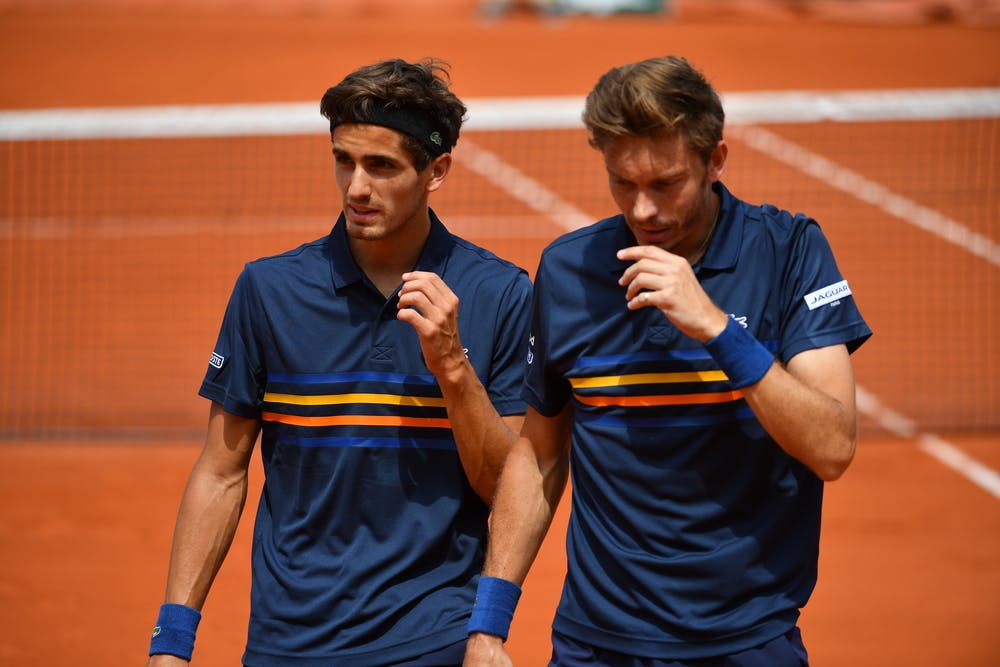Also on Saturday:
Home hopes in Men's Doubles final

Simona Halep has history at Roland-Garros, but Sloane Stephens has lifted a Grand Slam trophy. Who will emerge victorious?

On paper, the outcome is clear. Simona Halep arrived at Roland-Garros as world No.1, among the hot favourites to win; and while close rivals such as Elina Svitolina fell by the wayside, the Romanian overcame all-comers, be it a first-round wobble against Alison Riske or a gritty quarter-final with Angelique Kerber.
With her No.1 ranking assured once again, Halep’s opponent in the ultimate showdown is Sloane Stephens, tipped for the title at the start of this fortnight by… step forward, anyone making that claim? No?
The statistical form wholly backs Halep. She leads Stephens 5-2 in their career jousts, including all four of the last encounters, three of which were on the American’s optimum hard court surface. In the last trio of sets they have played, Stephens has emerged with a net yield of three games.
Patently, it is written in neon that this is Halep’s time. A Grand Slam crown is to be hers at last.
But… this is hideously familiar from 12 months ago, when she faced the unheralded world No. 57 Jelena Ostapenko in the final, led by a set and 3-0 – and lost.
If history and statistics created an infallible guide to future results, no rankings in any sport would ever change, nor any new winners ever emerge. All that background information is useful, but only up to a point.
Tennis is an unfair master. Due reward does not exist.
The ruthless beauty of sport for those who watch, and the terror of it for those who play, is that you just never know. There simply aren’t enough titles, championships, medals and trophies to go around all those who “should” win them, never mind all those who might… and do.
Ask Ostapenko. Ask Iva Majoli, who snapped Martina Hingis’ 37-match winning streak by beating the Swiss in straight sets in the 1997 final here. Ask anyone who knows anything about sport.
Stephens has emerged from the bottom half of the draw containing defending champion Ostapenko, Rome champion Svitolina, Madrid winner Petra Kvitova, Stuttgart victor Karolina Pliskova, not to mention Australian Open winner Caroline Wozniacki, all ranked ahead of the American.
If all those pre-tournament statistics and form guides were foolproof, one of those players would be facing Halep. Instead Stephens – having arrived at Roland-Garros as the world No.10 – is striking deep into new career territory and is assured of the No.4 slot, win or lose against Halep.
The American’s post-match press conferences this fortnight have been characterised by their cheery good humour, and her desire to talk about Paris, the city’s art and even its ice-cream – but rarely with any intensity about tennis.
That relaxation seems only to have fuelled her focus here, as when she repelled match point against Camila Giorgi in the third round, the darkest crisis of her progress to the final. Setting that match aside, her remaining five jousts here to date have cost her a total of 16 games.
There are similarities between the finalists. This is one of the few times Stephens gets to face a shorter opponent – Halep is 1.68m to the American’s 1.70m. Neither woman will be firing a barrage of aces, while both can count on strong movement and defence.
That old tennis saying about “playing the big points well” is the key. Elite sport often boils down to handling the moment. Will Halep be haunted by her Grand Slam ghosts, or chase them away? Will Stephens ride the wave of her US Open triumph?
All that is reasonable says Simona Halep will lift the Coupe Suzanne-Lenglen at Roland-Garros 2018. But the devil says wait and see.